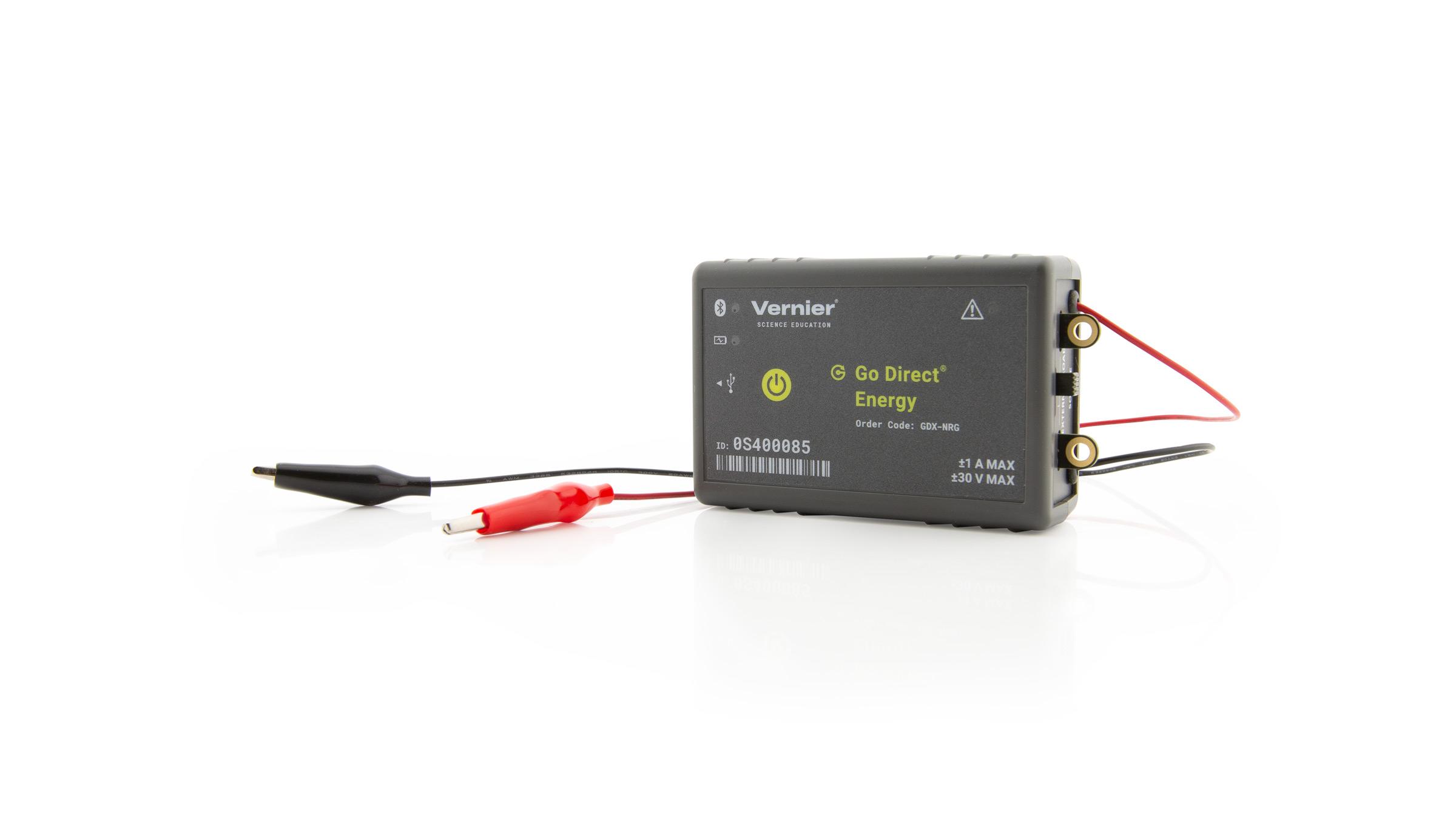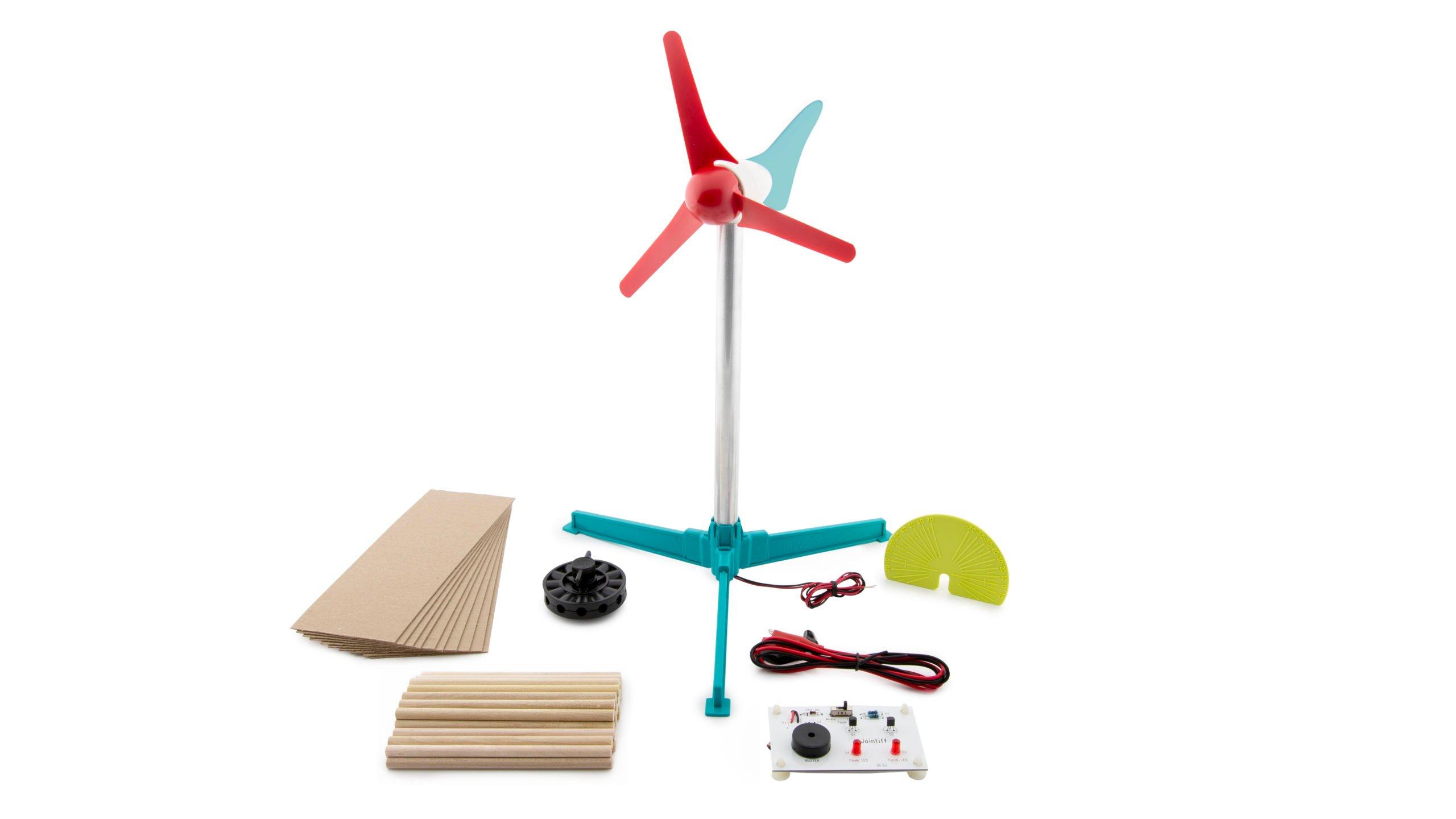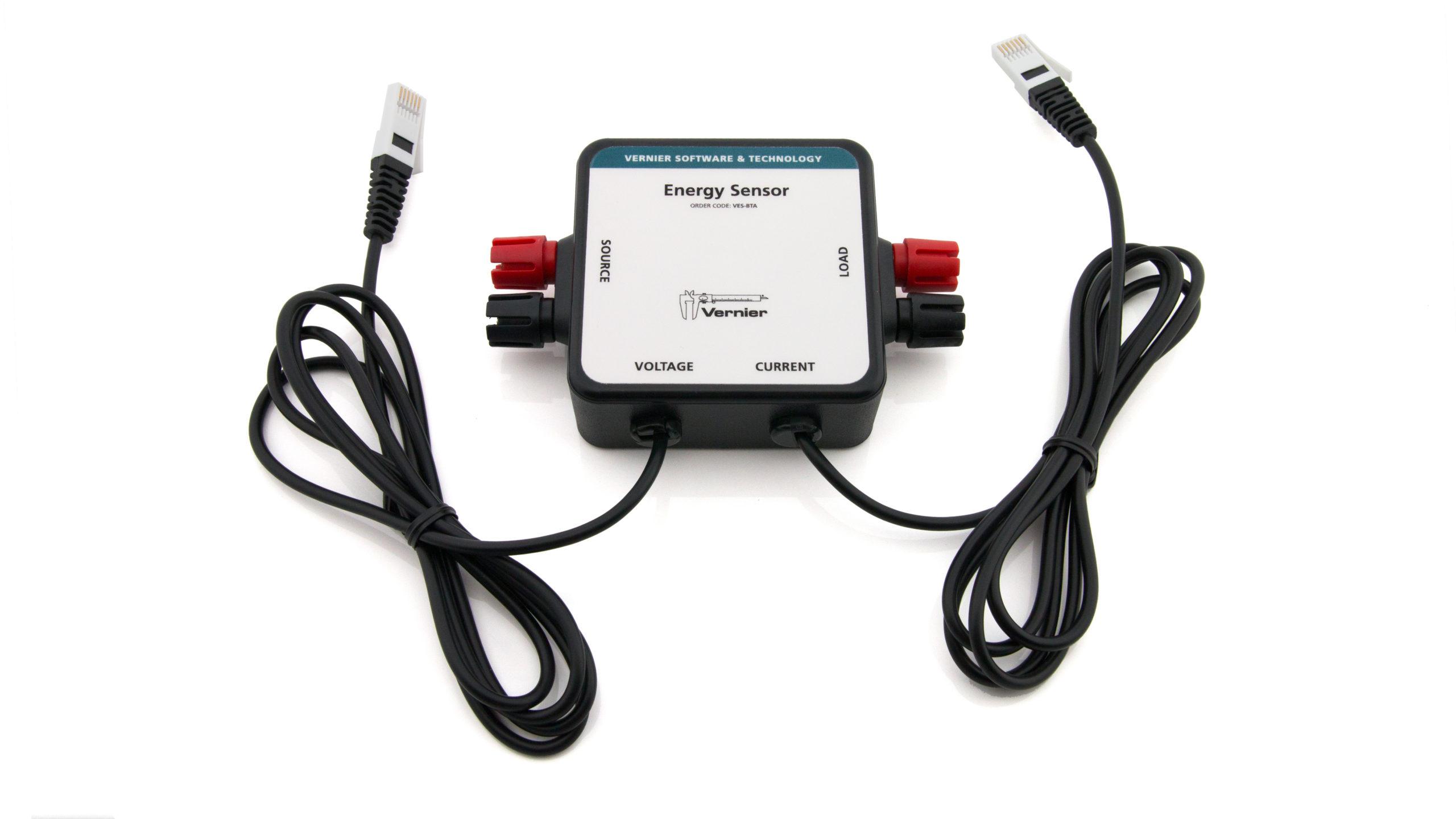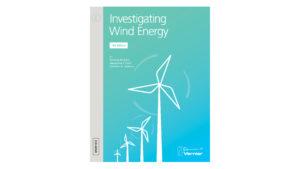Introduction to the Vernier Energy Sensor
Experiment #3 from Investigating Wind Energy
- Education Level
- Elementary School
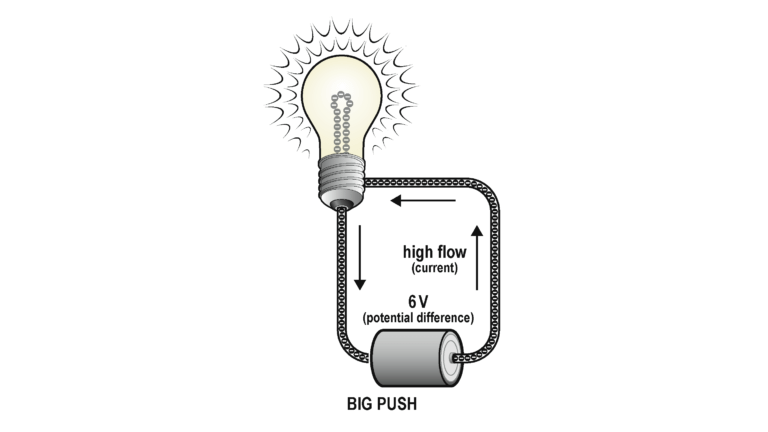
Introduction
When wind pushes against the blades of a turbine, the blades spin, and the generator inside the turbine causes electrons to move through the wires connected to the turbine. In this experiment, you will use a Vernier Energy Sensor to measure the electrons as they move. There are three values you will use to measure the movement of the electrons: current, potential difference, and power.
Current is the measure of the flow of electrons through the wires. When there is a high current, the electrons are flowing quickly through the wire. When the current is low, the electrons are moving more slowly. Current is measured in units of milliamperes, often called milliamps for short. The symbol used to represent miliamps is mA.
To make the electrons move through the wire, they need to be “pushed.” The amount of push is called the potential difference. Potential difference is measured in units of volts. The letter V is used to represent a volt. If you use a AA battery in a flashlight, the battery outputs 1.5 V. It pushes enough electrons to light up the small light bulb in the flashlight. Car batteries are usually 12 V. They push more electrons–enough to play music on the car stereo or defrost the windows on a cold day.
Power is the measure of how quickly energy is generated or used. In this experiment, power is measured in units of milliwatts. The symbol used for miliwatts is mW.
Power is a value that is calculated by multiplying the current and the potential difference
power = current × potential difference
The data-collection software that you use in this experiment will do the calculation for you.
The following table summarizes the different measurements and units you will use in this experiment.
| Measurement | Unit | Symbol |
|---|---|---|
| current | milliamp | mA |
| potential difference | volt | V |
| power | milliwatt | mW |
Objectives
- Set up data-collection equipment.
- Measure current, potential difference (voltage), and power output of a wind turbine with a Vernier Energy Sensor.
- Use data-collection software to calculate mean (average) values.
Sensors and Equipment
This experiment features the following sensors and equipment. Additional equipment may be required.
Ready to Experiment?
Ask an Expert
Get answers to your questions about how to teach this experiment with our support team.
- Call toll-free: 888-837-6437
- Chat with Us
- Email support@vernier.com
Purchase the Lab Book
This experiment is #3 of Investigating Wind Energy. The experiment in the book includes student instructions as well as instructor information for set up, helpful hints, and sample graphs and data.

